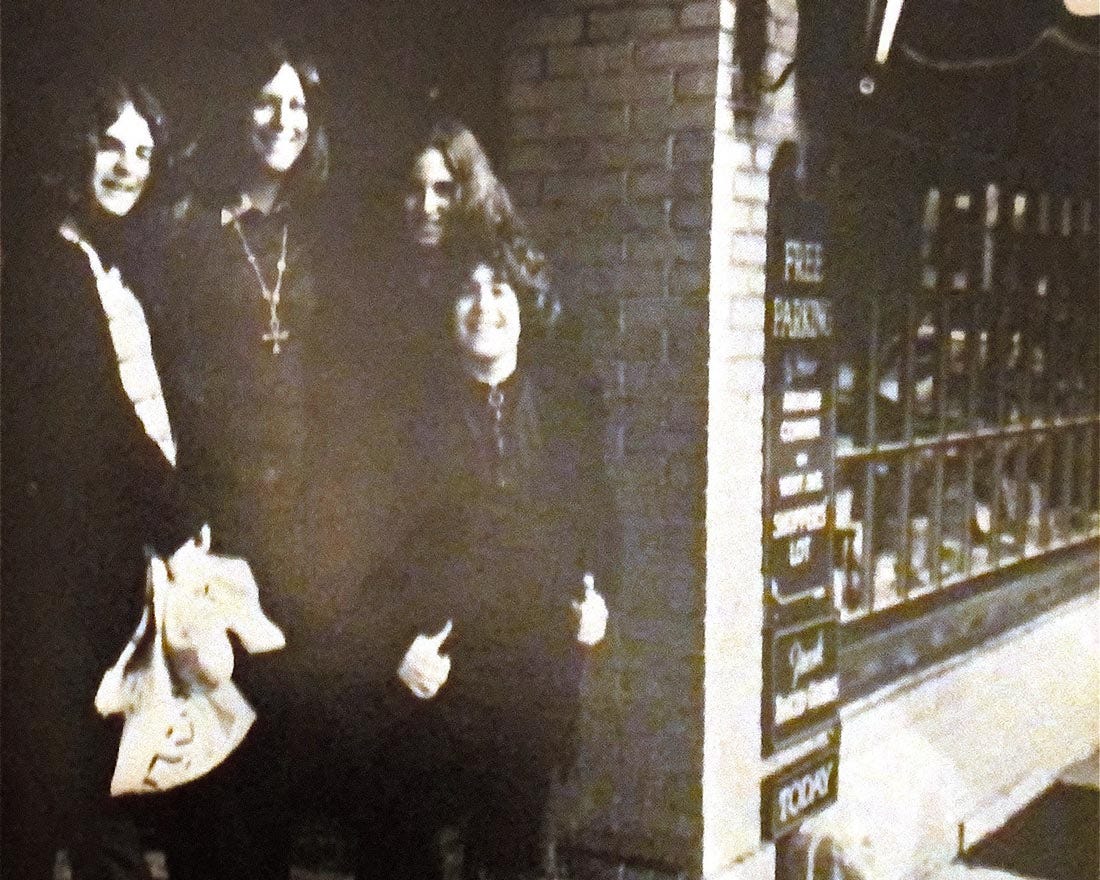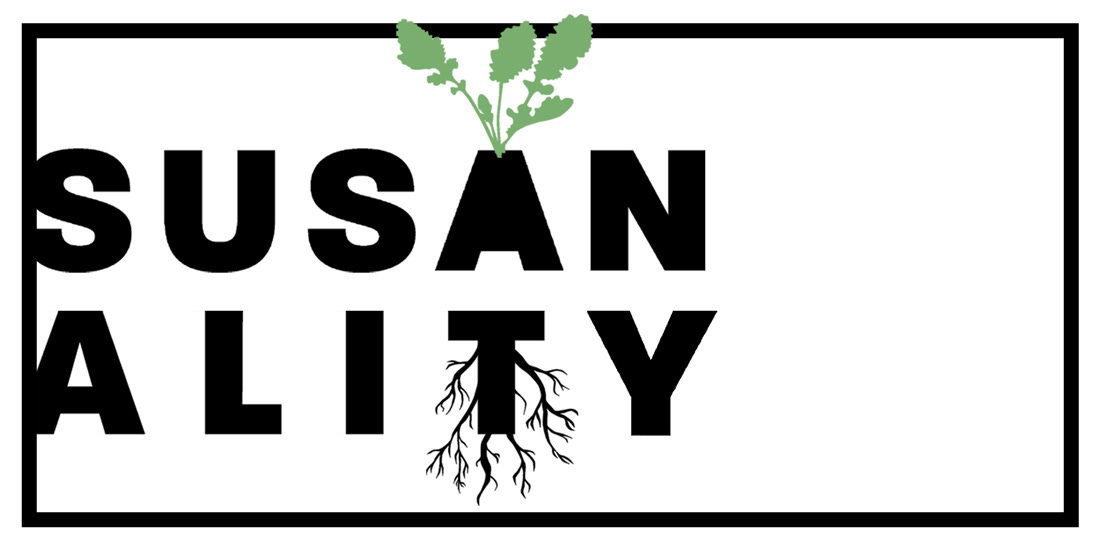Welcome to issue #6 of Susanality, a free weekly newsletter. If you’re loving it, please consider becoming a paying supporter. New paid features are coming soon!
“Bowls” have become such a part of the way we eat now. They’ve even trickled down to the menus of fast food restaurants. But that doesn’t mean they’re good or even good for you. Putting food in a bowl doesn’t automatically and mysteriously make it healthy, as some may believe. You have to be intentional to make it good and good for you!
I included a recipe for a Za’atar Tofu Bowl in my book Open Kitchen because it was something we ate ourselves at home. We also served it to guests whose dietary restrictions we weren’t quite sure of, since guests could assemble their own bowls, customizing them as they wished. Everyone always enjoyed them, especially the delicious tahini-based sauce I made to go with them.
Both my husband, Steve and I have a history with “health food,” as it was once called. So these bowls are a certain kind of comfort food for of us. Steve had a few stints of being macrobiotic in his younger years. I grew up in a health food store that my mother owned in the 1970s, which set me up for a lifetime of craving healthy food — at least some of the time. I also frequented a “health food” restaurant in Philadelphia in my college years called The Eatery, where my standard order was “brown rice and vegetables”. The menu was as creative as the name (i.e., not very), but it hit the spot at the time and was easy on the pocketbook. The last time we had a bowl dinner — with barley instead of rice, and salmon instead of tofu — Steve and I both noted that you would never get something so carefully cooked in an actual macrobiotic restaurant. Those places tend to have vats of wet, overcooked rice, beans that sit all day in steam tables, vegetables that are under-seasoned and over-steamed. You might feel virtuous but not particularly fulfilled after one of these spartan meals.

My kind of bowl definitely brings the concept up a couple of notches. One doesn’t really need a recipe for a bowl, it’s more of a method, or an idea. My recipes for the sauce and the tofu are the stars here. After that, riff away. I hesitate to call them “grain” bowls, because I serve a pretty small portion of grain, usually rice, in mine, rather than the often gargantuan portion of rice or farro or quinoa you might find in a fast-casual restaurant. Besides the rice and tofu, you can use leftover cooked vegetables (but usually I roast them fresh) and cooked beans. If you haven’t cooked those yourself you can use canned, but, sorry, they are not as good as homemade.

During the pandemic, these tofu bowls became part of our regular rotation. I always kept a few packages of tofu on hand for emergencies, when the house was devoid of other proteins. Since I only added a bit of each kind of vegetable, it was a great fridge cleaner. It was a satisfyingly resourceful way to use that slightly brown half head of fennel, a random portion of cauliflower, a few shallots (which I always have in my onion bowl), often some squash (especially rings of delicata), broccolini, turnips. Well, you get the idea. In my book, I finish the bowls off with some raw grated beets for color and crunch. But we’ve taken to topping them with some beet kimchi which we kept in the fridge pretty consistently; I like the convenience as much as I like the added tang. Not wasting food became a bit of a competitive sport around here, so there was a special feeling of satisfaction that came with finishing up all those bits and bobs. I think I counted as many as ten vegetables populating one of the many tofu bowls we enjoyed this last year.
One reason we’ve enjoyed these tofu bowls so much is The Bowls Themselves. A few years ago, I invested in some new ceramic pieces to add to my prop collection, using my upcoming book shoot as an excuse. I particularly loved the simplicity of KH Würtz ceramics, handmade by a father and son team in Denmark, which have graced the tables of Noma in Copenhagen. I had seen them and used them on photo shoots, and had admired them in the few shops that carry them. (There are two shops I know of, and both claim to carry them “exclusively”). They have a way of framing food in the most beautiful way. They elevate everything you put on them or in them with their clean lines and unobtrusive but un-boring glazes.
The Würtz large flat bowl, is one we used not only for our tofu bowls, but for so many other meals this last year. It gives us an extra dose of comfort and enjoyment. It didn’t hurt that they made our home-cooked meals seem kind of glamorous and exciting. Everything from pastas to soups to stews went in these bowls. They are quite heavy, which also makes them fairly indestructible. Because of their thickness, they hold heat well, making them especially comforting on cold winter nights. (We always heat up our bowls before putting food in them). I’m not going to lie — these are expensive. An entire set would be unaffordable. But we have bought a few different plates in twos or fours because we like to switch things up, and it is usually just the two of us.
There are lots of similarly shaped bowls out there, some of them described as “grain bowls”, so it’s a thing. And that thing is, you can arrange everything in the bowl so you can see each item and eat around the bowl as you please. If you don’t have this shape on your shelf, get yourself a few. I guarantee you’ll be using them all the time to make bowls that will make you feel both virtuous AND fulfilled.
If you haven’t yet, or want to explore subscription upgrades, please click the little button below. Fun things are on the way!
PS - I wanted to remind you that all of the recipes in my newsletters live permanently here. You can also scroll through public recipes on my site or keep up with me on Instagram. Or better yet, you can support me by ordering my book, Open Kitchen.
ZA’ATAR TOFU BOWLS
click here for a printable version
SERVES 4
I like to serve these bowls for a Sunday lunch when I might be hosting a vegetarian, but it’s a good time for any of us to eat something healthy and light to make up for whatever damage we did the night before. Speaking of the night before, I might use some accidentally-on-purpose leftover roasted vegetables, and even the rice or beans (always planning ahead!). Bowls are the modern way to eat leftovers, after all. Adding some freshly cooked or prepared elements or warming the vegetables doesn’t make this feel like leftovers at all. Change up the vegetables according to what’s in season, what you like, or what you may have in the house. Winter squash, cauliflower, shallots, fennel, and summer squash all are good options.
FOR THE ZA’ATAR TOFU:
One 14- to 16-ounce block medium-firm tofu, drained
1 1⁄2 tablespoons olive oil
1 tablespoon za’atar
1 teaspoon garlic powder
1⁄2 teaspoon salt
2 garlic cloves, slivered
FOR THE TAHINI SAUCE:
1⁄2 cup tahini
2 tablespoons white miso (I prefer the “less sodium” variety)
2 teaspoons low-sodium tamari
A few dashes of sriracha
2 teaspoons maple syrup
1⁄4 cup plain Greek yogurt (any fat content)
2 tablespoons fresh lemon juice
FOR THE BOWLS:
1 small bunch Broccolini, separated into stalks, tough stems removed
4 small Hakurei or 2 larger turnips, trimmed, peeled, and quartered
1 small bunch carrots, trimmed and peeled (1⁄2 inch of stem left on)
Olive oil
Salt and freshly ground black pepper
3 cups cooked black or brown rice
1 1⁄2 cups white beans (any cooked or canned bean will work)
1 medium beet, peeled and grated
2 large radishes, cut into paper-thin slices
Sumac (optional)
To make the za’atar tofu: Cut the tofu lengthwise into 4 rectangular slabs and wrap them in a few layers of paper towel. Press down lightly and weight with something moderately heavy, like a few cans on top of a small cutting board, for 10 to 15 minutes to squeeze some of the water out.
Cut each rectangle of tofu into 3 squares, so you have 12 squares total, and place on a dinner plate. Rub with 1 tablespoon of the oil and dust with the za’atar, garlic powder, and salt. Turn to coat well. Heat a large (12-inch) skillet over medium-high heat until quite hot. Add 1 tablespoon oil, the fresh garlic, and the tofu. Cook until the tofu is browned and crisp on both sides, 3 to 4 minutes per side. If not serving right away, keep warm in at the lowest setting your oven has—this also will crisp the tofu a little more.
To make the tahini sauce: Combine all of the ingredients in a small bowl and whisk together until smooth, adding 1⁄4 cup warm water or more as needed, until it reaches a thick, creamy but pourable consistency. Set aside.
Preheat the oven to 425°F.
To roast the vegetables: Place the Broccolini, turnips, and carrots (in separate sections) on a large baking sheet. Coat lightly with oil and season with salt and pepper. Roast for 20 to 35 minutes, until golden brown and tender, removing any pieces that are done early.
To assemble the bowls: Divide the rice and beans among 4 bowls. Add the roasted vegetables and tofu. Garnish with the grated beet and radish slices. Serve the sauce on the side, sprinkled with sumac (if using) and a drizzle of oil.






